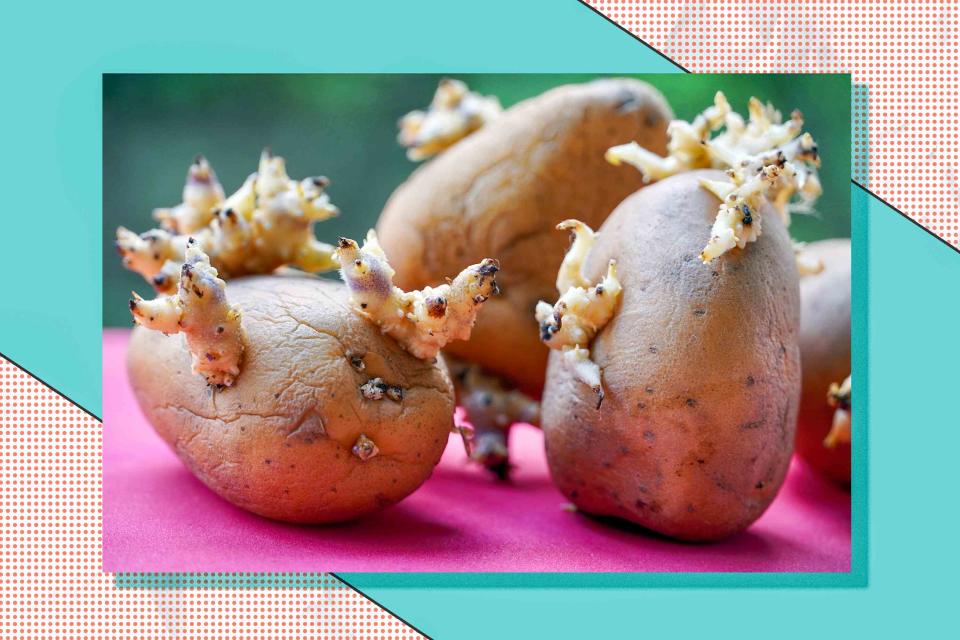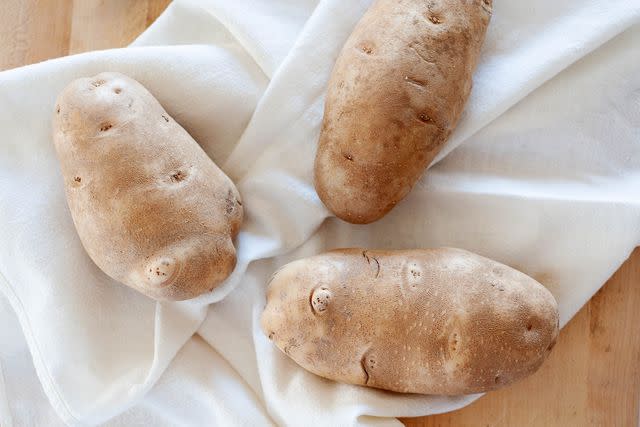Is It Safe To Eat Sprouted Potatoes? Here’s What the Experts Say
You intended to cook those potatoes and now they are full of sprouts. Can you still eat them or should you compost?

Simply Recipes / Wanda Abraham
You’re hankering for a baked potato or whipping up a sheet pan dinner. But when you reach into the bag, the potatoes have sprouts and a greenish tinge. Are they still safe to eat?
What’s in the Sprout
Potatoes contain two compounds–solanine and chaconine–called glycoalkaloids. They are found naturally in plants like tomatoes and eggplants too. According to research documented in Encyclopedia of Food and Health, glycoalkaloids may have some health benefits, such as lowering cholesterol or fighting inflammation. But when there’s too much of these compounds, they can be toxic.
“When potatoes sprout and have green spots, it usually means that they have been exposed to light for an extended period of time,” says Minwei Xu, assistant professor in the plant science department at North Dakota State University, and member of the Institute of Food Technologists. “This can cause the potatoes to produce a natural toxin called solanine, which is concentrated in the green parts of the potato.”
The most glycoalkaloids are found in the potato sprouts, green skin, and “eyes.” The green part is chlorophyll, a naturally occurring compound in plants that happens when they are exposed to light. And when that happens, there are often toxins present.
“Sprouting potatoes is the potato trying to grow a new potato. This can happen under the right conditions, which include warm temperatures, humidity, light, and sitting for long periods,” says registered dietitian nutritionist Nichole Dandrea-Russert, MS, RDN. “Sprouts are a concentrated source of glycoalkaloids.”

Should You Eat Sprouted Potatoes?
When your potato has sprouts and green spots, it’s safest to toss it in the compost bin. “If the potato has only a small green spot, you can simply cut it off along with any sprouts before cooking,” says Xu. “However, if the potato has large green areas or if the sprouts are long and well-developed, it is best to discard the entire potato to avoid the risk of solanine poisoning.”
Although removing green spots and sprouts reduces glycoalkaloids, it doesn’t mean they’re completely gone. And whether you boil or bake, fry or grill, cooking doesn’t lessen the toxins.
“It does not remove all the toxin as it can also be found in the flesh of the potato,” says registered dietitian nutritionist Rahaf Al Bochi, RDN, LD owner of Olive Tree Nutrition and spokesperson for the Academy of Nutrition and Dietetics. “It is best to throw it away.”
Symptoms of toxicity can appear within a few hours and can include vomiting, diarrhea, headache, and confusion, reports the National Capital Poison Center.

How To Keep Your Spuds From Sprouting
Skip the big bags and buy potatoes only when you are ready to use them. And examine them before you put them in your grocery cart. “Inspect potatoes at the grocery store for physical damage or spoilage prior to purchasing them,” suggests Al Bochi.
Then, where you keep them matters.
“Potatoes should be stored in a cool, dry, and dark place, such as a pantry, cupboard, or cellar. Avoid storing potatoes in areas that are exposed to light or heat, such as on a sunny windowsill, near a stove or oven, or in the refrigerator,” says Xu.
Keep them in a breathable container that allows air to circulate—like a paper or mesh bag, basket, or cardboard box. Don’t keep them in sealed plastic bags because they can cause moisture which triggers sprouting. The best storage temperature is 45 to 50 degrees Fahrenheit, says Dandrea-Russert.
And keep potatoes away from onions. Onions can release gasses that can cause potatoes to sprout more quickly.
Read the original article on Simply Recipes.

